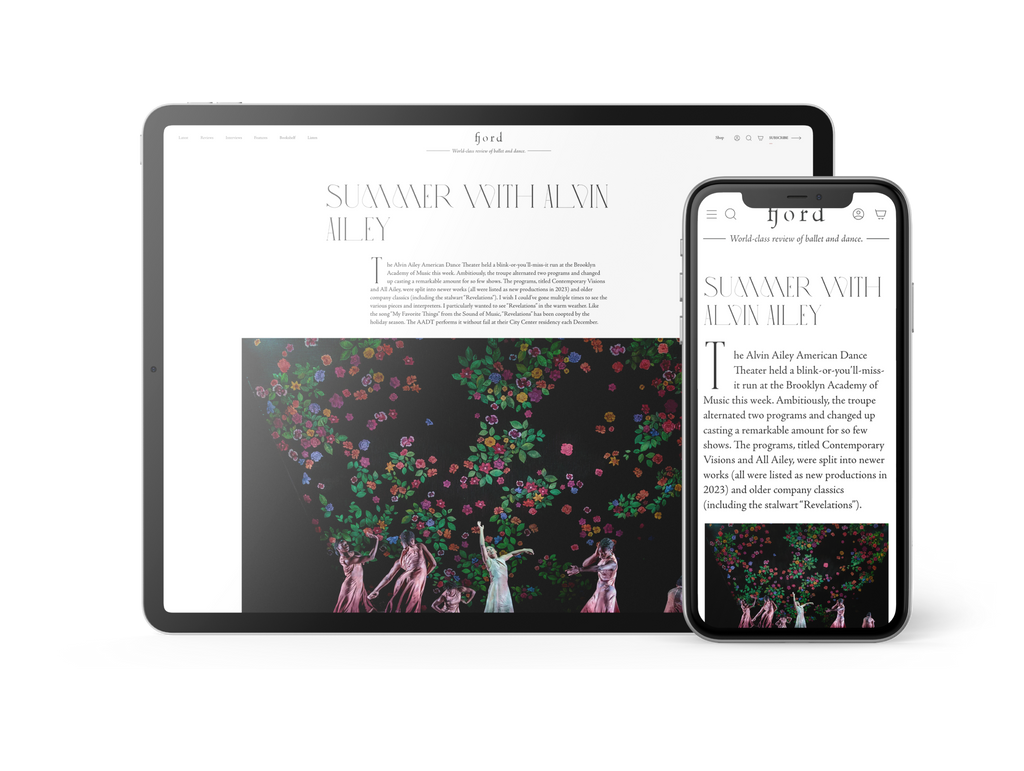Ryan Tomash Steps into a New Role
Back in October, New York City Ballet got a new cowboy. His arrival occurred in the final section of George Balanchine’s “Western Symphony.”
Continue Reading
World-class review of ballet and dance.
George Balanchine’s “Ballo della Regina” and “Kammermusik No. 2” were created approximately at the same time and premiered by New York City Ballet in January 1978. Both pieces are concise and small in scale; both are fascinating and unique; yet neither belongs to the pantheon of Balanchine’s greatest creations. Nevertheless, each ballet, precious in its own way, adds to our understanding and appreciation of the craft of the great ballet master. Dance critic Arlene Croce aptly summed up her attraction to “Ballo della Regina” in particular—and to a Balanchine ballet in general—simply and clearly: “Who cares if it isn’t great? The greatest Balanchine ballet is the one you happen to be watching.”
Performance
Place
Words

Megan Fairchild in George Balanchine's “Tschaikovsky Suite No. 3.” Photograph by Paul Kolnik


“Uncommonly intelligent, substantial coverage.”
Your weekly source for world-class dance reviews, interviews, articles, and more.
Already a paid subscriber? Login
Back in October, New York City Ballet got a new cowboy. His arrival occurred in the final section of George Balanchine’s “Western Symphony.”
Continue ReadingWhen Richard Move enters from stage left, his presence is already monumental. In a long-sleeved gown, a wig swept in a dramatic topknot, and his eyes lined in striking swoops, the artist presents himself in the likeness of Martha Graham—though standing at 6’4, he has more than a foot on the late modern dance pioneer.
Continue ReadingPerhaps not since Mikhail Fokine’s 1905 iconic “The Dying Swan” has there been as haunting a solo dance depiction of avian death as Aakash Odedra Company’s “Songs of the Bulbul” (2024).
Continue ReadingDance, at its best, captures nuance particularly well, allowing us to feel deeply and purely. In its wordlessness, it places a primal reliance on movement and embodied knowledge as communication all its own. It can speak directly from the body to the heart, bypassing the brain’s drive to “make sense of.”
Continue Reading
comments